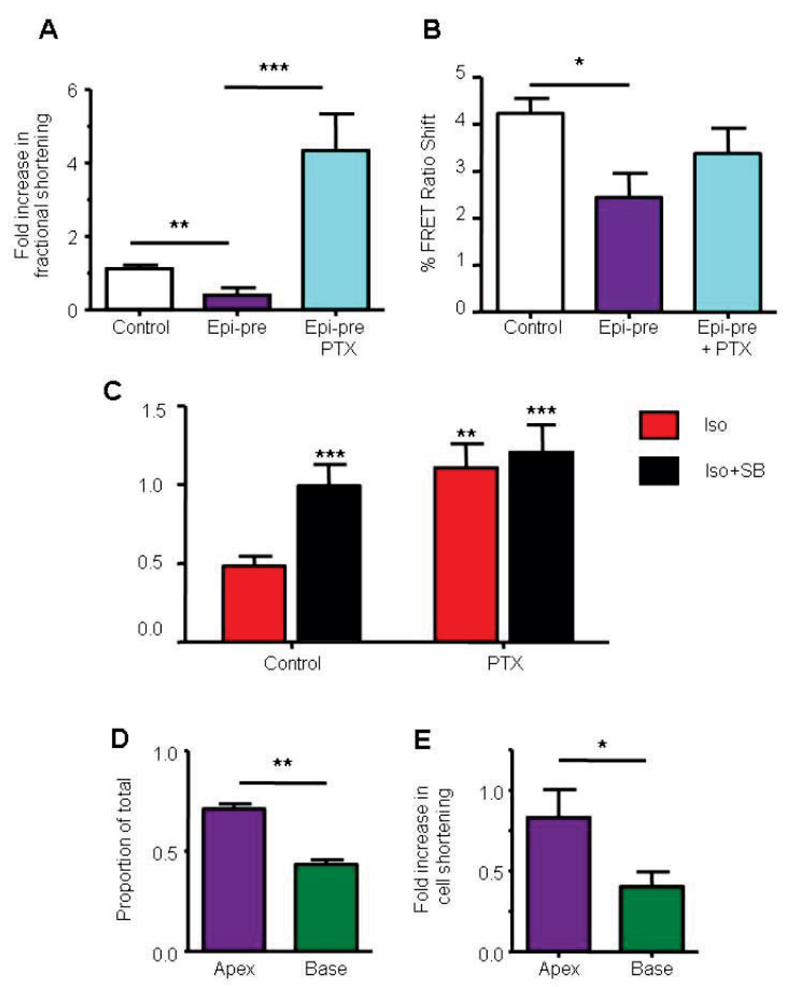Figure 3.
In vitro Takotsubo cardiomyopathy model induced by high dose epinephrine exposure. Effect of 20 min pretreatment with epinephrine (Epi-pre, 1µM), followed by 10 min wash, on subsequent β2AR contractile (A) and cAMP (B) responses with Gi (PTX-sensitive) component. A, Contraction amplitude in isolated rat ventricular myocytes: peak fold increase over basal: Control (n=15); Epi-pretreated alone (n=15); Epi-pretreated +PTX (n=7). B, Whole cell cyclic AMP levels, measured using an EPAC2-FRET sensor. Control (n=40); Epi-pretreated alone (n=10); Epi-pretreated +PTX (n=9). *P<0.05, **P<0.01, ***P<0.001, one-way ANOVA Kruskal-Wallis test. C, β2AR-mediated inotropic response to 100nM isoproterenol in the presence of the β1AR blocker CGP20712A (300nM), peak fold increase over basal in control (n=13) or PTX-treated rat ventricular myocytes (n=13), in the presence and absence of SB20380 2.5μM. **P<0.01, ***P<0.001 vs control, unpaired t-test. D and E, Apically-derived cardiomyocytes demonstrate increased β2AR levels and responses. D, Proportion of β2ARs with respect to total βAR radioligand binding in ventricular myocytes from the apex and base of normal rat heart. N=4 preparations, **P<0.01 vs base, paired t-test. E, Apical cardiomyocytes (purple bars) show a larger increase in percentage cell shortening through the β2AR compared to basal cardiomyocytes (green bars). Fold increase in shortening with 100nM isoproterenol + 300nM CGP20712A. (*p<0.05 apex vs base, paired t-test. Base: n=13 cells; Apex: n=13 cells, n=13 animals).

